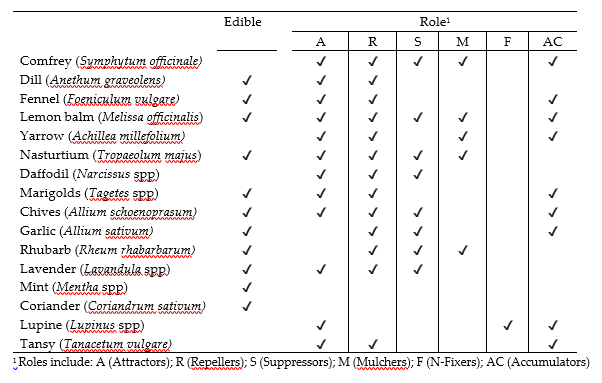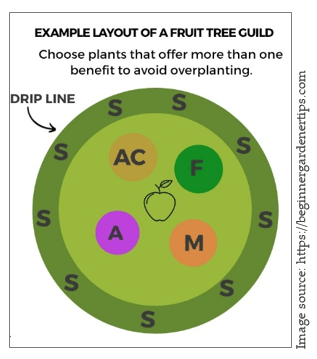In the EFG, companion plants are selected and planted around fruit trees in what is commonly referred to as “guilds” (e.g., “tree guilds”, “plant guilds”). Recall that forest gardens are intentionally designed to mimic not only the structure of natural woodland systems, but also the function. Healthy forest ecosystems are productive, self-sustaining, and diverse in flora and fauna. One common aim for forest gardens, and the EFG specifically, is to mimic these characteristics through amplification of diversity, and reduction (or elimination) of external fertilizers, pesticides, and other synthetic inputs. Tree guilds aim to build soil health, attract beneficial insects, repel pests, and improve nutrient acquisition and availability. An example aerial layout of a fruit tree guild is shown below.
Note that plant guilds often have six “categories” of plants to promote a multifunctioning system: attractors (A), repellers (R), suppressors (S), mulchers (M), nitrogen-fixers (F), and dynamic accumulators (AC). There’s no rule that you have to plant all of these or can’t plant more than one species from each category. Further, some plants fall into multiple categories. Some example plants for building fruit tree guilds are as follows:

